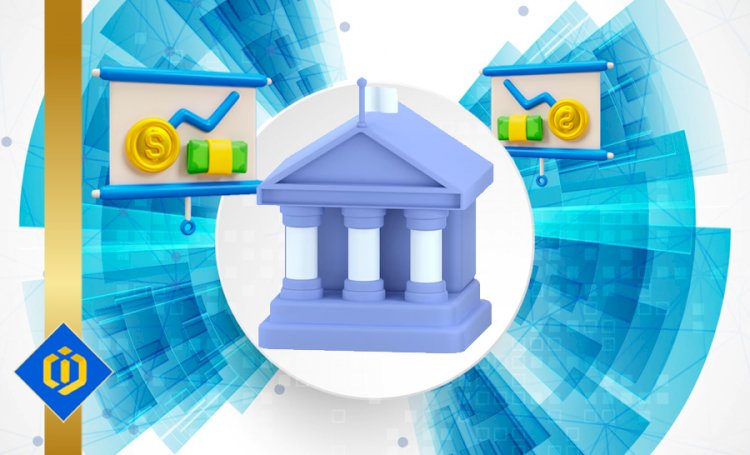The Evolution of Banking: Exploring the Integration of Traditional Banking with Digital Innovations

The banking industry has undergone a significant transformation in recent years, driven by rapid advancements in technology and changing customer expectations. Traditional brick-and-mortar banking is being revolutionized by digital innovations, leading to the integration of traditional banking services with online and mobile platforms. In this article, we will explore the evolution of banking and examine how digital innovations are reshaping the industry.
- Digital Banking: The Rise of Online and Mobile Banking
Digital banking has become increasingly prevalent, with the rise of online and mobile banking platforms. Customers can now access their accounts, make transactions, and manage finances conveniently from their computers or mobile devices. Online banking provides users with 24/7 access to their accounts, allowing them to check balances, view transaction history, and pay bills. Mobile banking takes convenience a step further, enabling customers to perform banking functions on the go, utilizing features such as mobile check deposit and person-to-person payments.
The integration of traditional banking services with digital platforms has enhanced customer convenience and accessibility while reducing the need for physical branch visits. Customers can now perform routine banking tasks from the comfort of their homes or while on the move, saving time and effort.
- Fintech Startups: Disrupting the Banking Landscape
The emergence of fintech (financial technology) startups has disrupted the traditional banking landscape. Fintech companies leverage technology and innovation to provide financial services more efficiently, effectively, and at times, more affordably than traditional banks. These startups offer a range of services, including peer-to-peer lending, digital payments, robo-advisory, and blockchain-based solutions.
Fintech companies have gained popularity due to their user-friendly interfaces, personalized experiences, and quick response times. They have successfully addressed pain points of traditional banking, such as lengthy loan approval processes and high fees. Fintech startups have forced traditional banks to adapt and embrace digital innovations to remain competitive.
- Open Banking: Unlocking Data and Collaboration
Open banking is an initiative that promotes the sharing of customer data between banks and third-party financial service providers through secure application programming interfaces (APIs). This allows customers to access a broader range of financial services and gives them more control over their data. Open banking encourages collaboration between banks and fintech companies, spurring innovation and creating new opportunities.
Through open banking, customers can consolidate their financial information from multiple banks and fintech platforms into a single interface or application. This enables them to make more informed financial decisions, access personalized financial advice, and seamlessly transfer funds between accounts.
- Artificial Intelligence and Machine Learning: Enhancing Customer Experience
Artificial intelligence (AI) and machine learning (ML) technologies are revolutionizing the banking industry by enhancing customer experience, automating processes, and improving risk management. AI-powered chatbots and virtual assistants are being used by banks to handle customer inquiries, provide real-time support, and offer personalized recommendations. These technologies reduce response times, enhance customer engagement, and improve overall satisfaction.
Machine learning algorithms are also being used to analyze vast amounts of customer data, identify patterns, and detect fraudulent activities. This helps banks strengthen their security measures and protect customer accounts from unauthorized access.
- Blockchain Technology: Transforming Security and Transactions
Blockchain technology, famous for its association with cryptocurrencies like Bitcoin, is transforming the banking industry by enhancing security and improving transaction efficiency. Blockchain offers a decentralized and transparent ledger system that eliminates the need for intermediaries in financial transactions.
Banks are exploring the use of blockchain for various applications, such as cross-border payments, trade finance, and identity verification. Blockchain-based solutions can streamline processes, reduce costs, and enhance security by providing immutable records of transactions.
The integration of traditional banking with digital innovations is reshaping the banking industry, enhancing customer convenience, and driving innovation. Digital banking platforms, fintech startups, open banking initiatives, AI and ML technologies, and blockchain innovations have revolutionized the way customers access and manage their finances.
As technology continues to advance, the banking industry must continually adapt to meet changing customer expectations and stay competitive. Embracing digital innovations and collaborating with fintech startups can enable traditional banks to leverage new technologies, improve customer experiences, and offer innovative financial products and services.
The evolution of banking is not about replacing traditional banking models but about combining the strengths of traditional banking with the efficiency and convenience offered by digital innovations. By striking the right balance between human interaction and technological advancements, banks can create a seamless and personalized banking experience for their customers in this digital age.
Author: Pooyan Ghamari, Swiss Economist & Visionary

 content-team
content-team 





















